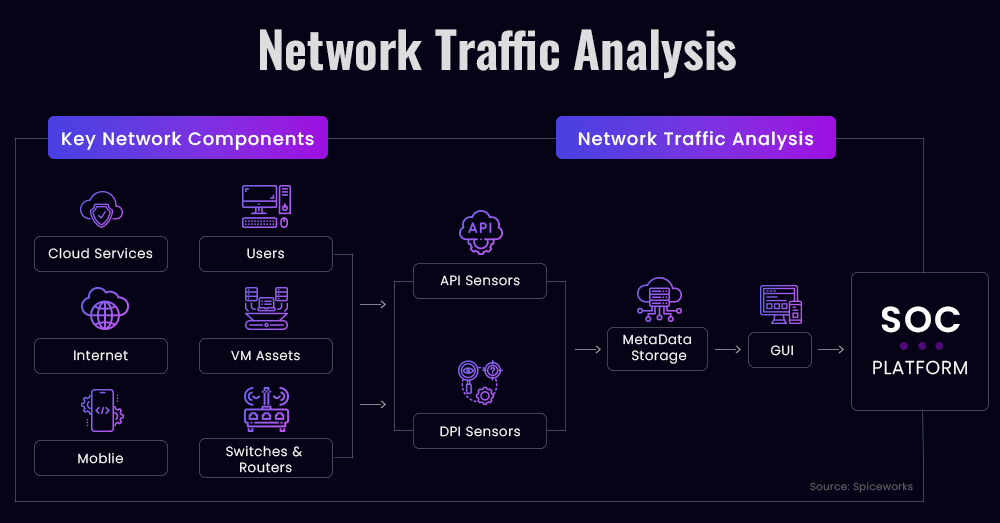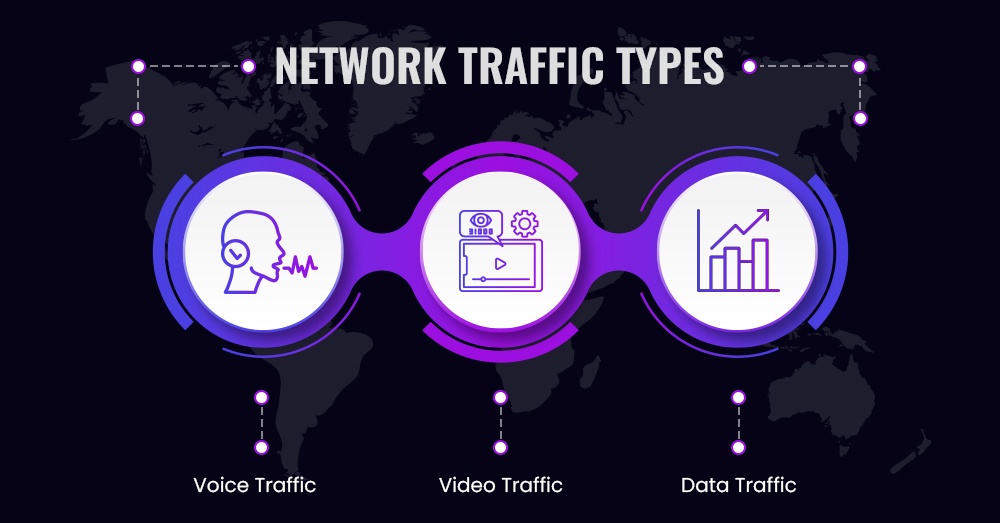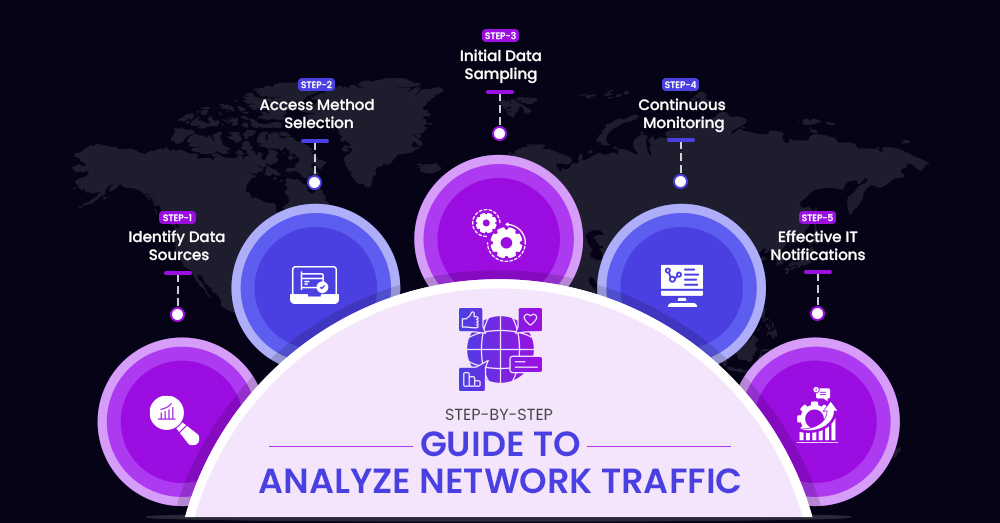The Ultimate Guide to Understand Network Traffic Analysis
Explore the importance of Network Traffic Analysis (NTA) in safeguarding your business against cyber threats and network performance problems.


Explore the importance of Network Traffic Analysis (NTA) in safeguarding your business against cyber threats and network performance problems.

In the modern interconnected digital environment, businesses rely heavily on their networks to maintain smooth operations, efficient communication, and data exchange. As per TechTarget Report, Cybercriminals will be able to steal more than 33 billion records by 2023 (175% from 2018). However, the majority of cyberattacks happen via networks, making them a crucial resource for understanding threats to an organization and its systems. This is where Network Traffic Analysis (NTA) comes into play.
Let’s dig more profoundly into the practice of overseeing network activities to gain valuable insights into potential threats and IT-related issues.
In the realm of network management, the capability to handle diverse forms of traffic is a fundamental aspect of design. However, it’s important to recognize that not all network activities carry the same weight. The ability to discern potential security vulnerabilities and pinpoint uncommon operations that might trigger problems, including network downtime, becomes pivotal.
This is precisely where Network Traffic Analysis (NTA) assumes a crucial role. Network traffic analysis involves the methodical scrutiny of a network’s actions and accessibility. This approach includes the continuous monitoring of data movement across distinct sections of the network, encompassing details such as data content, timing, and locations.

NTA revolves around safeguarding your data origins, guaranteeing peak network performance, and spotting potentially harmful traffic trends. Here are several reasons why organizations should adopt it.

Delving into your network’s traffic might seem overwhelming. It encompasses the collection, storage, and monitoring of data moving across on-premises, hybrid, or multi-cloud setups. Navigating this data for network planning and design requires visualization and search capabilities. Additionally, timely notifications are essential for efficient troubleshooting. Managing all these aspects can feel like a lot to handle. To ease your concerns, let’s simplify the process by breaking down the necessary steps:

As organizations evolve, they encounter a growing number of network monitoring obstacles—ranging from the oversight of network performance to tracking and enhancement. By adopting an NTA solution, enterprises can effectively mitigate these challenges using proactive approaches. Let’s embark on an in-depth exploration.
The analysis of network traffic data holds immense value in detecting incoming and ongoing security risks for a company’s digital defenses. Network Traffic Analysis (NTA) solutions have the capability to grant a holistic perspective across an organization’s entire IT framework, presenting the potential to spot threats before they infiltrate the organization’s endpoints.


Technical Content Writer
With a focus on clarity, conciseness & accessibility, my passion for writing enables me to write thought leadership content around cutting-edge technologies like 5G, Networking, Enterprise solution, and emerging technologies. My skills in branding & marketing allow me to produce impactful results while staying up with the latest trends & technology.